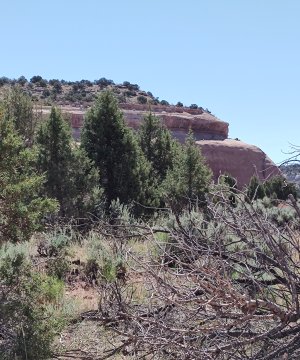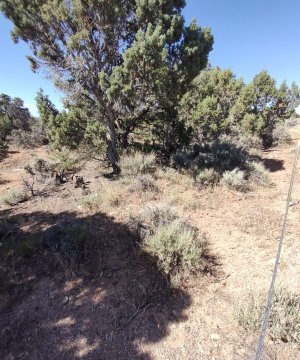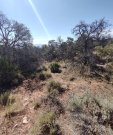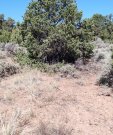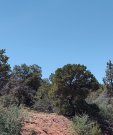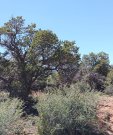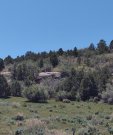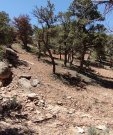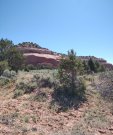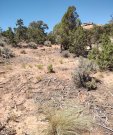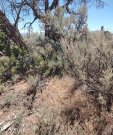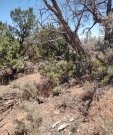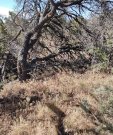Shallow Sandy Loam (pinyon-Utah juniper)
Scenario model
Current ecosystem state
Select a state
Management practices/drivers
Select a transition or restoration pathway
- Transition T1A More details
-
Restoration pathway R2A
Woody canopy reduction and reseeding
More details -
No transition or restoration pathway between the selected states has been described
Target ecosystem state
Select a state
Description
This state represents the natural variability and dynamics of this ecological site, prior to European settlement. The dominant aspect of this site is Pinyon and Utah Juniper with an understory of shrubs and associated grasses. The primary disturbance mechanisms for this ecological site in reference condition include drought, insects, and infrequent fire. Because catastrophic disturbances like a crown fire or drought happen with long intervals, these communities have long periods of succession (i.e. long periods of dense Pinyon and Juniper) of 300 to 600 years in upland ecological sites within the foothills, and 300 to 1,000 in semi-desert ecological sites. The timing of drought, and fire, coupled with surface disturbance can dictate whether the community can stay within the reference state or if the community transitions into another state.
Fluctuations in species composition and relative production may change from year to year dependent on climatic factors. At the lower end of precipitation and elevation ranges the deciduous shrubs (gambel oak, alderleaf mountain mahogany and wild crab apple) will be less abundant in the understory and will be more abundant at the higher precipitation and elevations, and north and east slopes. Winterfat and fourwing saltbush will be found predominantly at the lower elevations, lower precipitation, and on south and west facing slopes.
Submodel
Description
This state occurs when there is an absence of natural disturbance (i.e. Insects, drought, or fire) over long time frames (Zlatnik, 1999). Also, management actions could have allowed trees to become very mature and have effectively removed understory. Invasive plants have increased in abundance. This state has the lowest resiliency and resistance.
Seeding, with either natural disturbance or vegetation management to mimic the historic disturbance regime, may be necessary to transition to State 1 (Reference State). In some cases, there may be no practicable way back to reference, due to the large amounts of energy and monetary inputs that are needed.
Submodel
Mechanism
This transition from the native perennial grass and shrub understory in the reference state to a state that has been invaded by naturalized species such as crested wheatgrass (blown in or seeded), cheatgrass, mustards, and other introduced or exotic plants. This transition occurs as natural and management actions favor an increase in non-native grasses and forbs, especially annuals.
When this transition to State 2 occurs, the ecological site has lost much of its expected resistance and resilience. At this point natural and management actions have decreased the understory and erosion increases. Reduced influence from fire, insects, and drought could cause the tree canopy to close, effectively reducing the herbaceous understory, facilitating the transition. Improper grazing or increased surface disturbance combined with periods of drought can facilitate this transition because soil stability is lost and susceptibility to soil loss increases.
Constraints to recovery
Improper grazing or increased surface disturbance combined with periods of drought
Mechanism
This transition is reducing tree canopy and re-establishment of grasses and forbs. This pathway may facilitate the recovery of the soils. The infrequent naturally occurring fires or other natural disturbances (insect/pathogen outbreak, wetter climatic cycles) could also cause this transition. Reseeding after a disturbance may be the only way to successfully restore the ecological dynamics to a site. Either way this pathway could involves large energy, time and monetary inputs by man.
Model keys
Briefcase
Add ecological sites and Major Land Resource Areas to your briefcase by clicking on the briefcase (![]() ) icon wherever it occurs. Drag and drop items to reorder. Cookies are used to store briefcase items between browsing sessions. Because of this, the number of items that can be added to your briefcase is limited, and briefcase items added on one device and browser cannot be accessed from another device or browser. Users who do not wish to place cookies on their devices should not use the briefcase tool. Briefcase cookies serve no other purpose than described here and are deleted whenever browsing history is cleared.
) icon wherever it occurs. Drag and drop items to reorder. Cookies are used to store briefcase items between browsing sessions. Because of this, the number of items that can be added to your briefcase is limited, and briefcase items added on one device and browser cannot be accessed from another device or browser. Users who do not wish to place cookies on their devices should not use the briefcase tool. Briefcase cookies serve no other purpose than described here and are deleted whenever browsing history is cleared.
Ecological sites
Major Land Resource Areas
The Ecosystem Dynamics Interpretive Tool is an information system framework developed by the USDA-ARS Jornada Experimental Range, USDA Natural Resources Conservation Service, and New Mexico State University.
